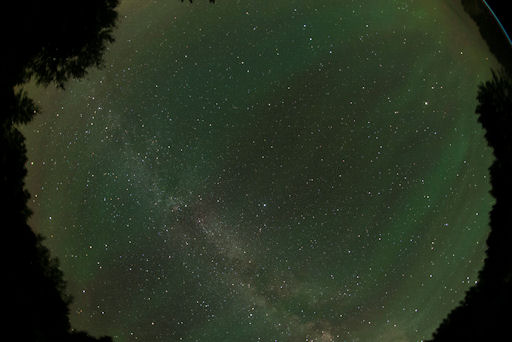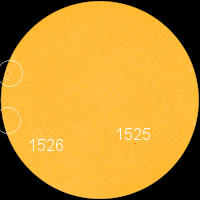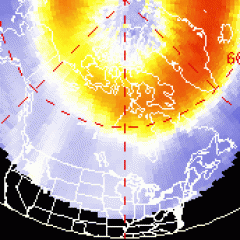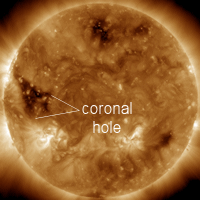NOT AURORAS: On some nights when the moon is new and city lights are far away, the sky turns green. But it's not the aurora borealis--it's airglow. Brian Larmay photographed the phenomenon on July 20th from the countryside near Beecher, Wisconsin:
"The airglow was intense enough to see visually," says Larmay. "I decided to create a brief animation of this phenomena with an 8mm fisheye lens which can be seen here."
Although airglow resembles the aurora borealis, its underlying physics is different. Airglow is caused by an assortment of chemical reactions in the upper atmosphere. During the day, ultraviolet radiation from the sun ionizes atoms and breaks apart molecules. At night, the atoms and molecules recombine, emitting photons as they return to normal. This process produces an aurora-like glow visible on very dark nights.
July 20th must have been a good night for airglow, because Warren Justice of Manitoba, Canada, saw it too.

![]()
Solar wind
speed: 443.8 km/sec
density: 3.6 protons/cm3
explanation | more data
Updated: Today at 1436 UT
![]()
X-ray Solar Flares
6-hr max: C2 1128 UT Jul23
24-hr: C2 1128 UT Jul23
explanation | more data
Updated: Today at: 1400 UT
![]()
![]()
![]()
Daily Sun: 23 Jul 12
![]()
![]()
Minor sunspots are emerging at the circled locations. Credit: SDO/HMI
![]()
![]()
![]()
Sunspot number: 29
What is the sunspot number?
Updated 23 Jul 2012
Spotless Days
Current Stretch: 0 days
2012 total: 0 days (0%)
2011 total: 2 days (<1%)
2010 total: 51 days (14%)
2009 total: 260 days (71%)
Since 2004: 821 days
Typical Solar Min: 486 days
Updated 23 Jul 2012
The Radio Sun
10.7 cm flux: 94 sfu
explanation | more data
Updated 23 Jul 2012
![]()
![]()
![]()
Current Auroral Oval:
![]()
Switch to: Europe, USA, New Zealand, Antarctica
Credit: NOAA/POES
![]()
![]()
![]()
Planetary K-index
Now: Kp= 2 quiet
24-hr max: Kp= 2 quiet
explanation | more data
![]()
Interplanetary Mag. Field
Btotal: 6.9 nT
Bz: 5.2 nT south
explanation | more data
Updated: Today at 1436 UT
![]()
![]()
![]()
Coronal Holes: 23 Jul 12
![]()
![]()
A solar wind stream flowing from this coronal hole should reach Earth on July 29-30. Credit: SDO/AIA.





